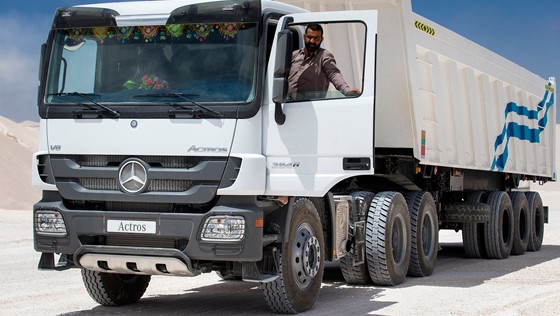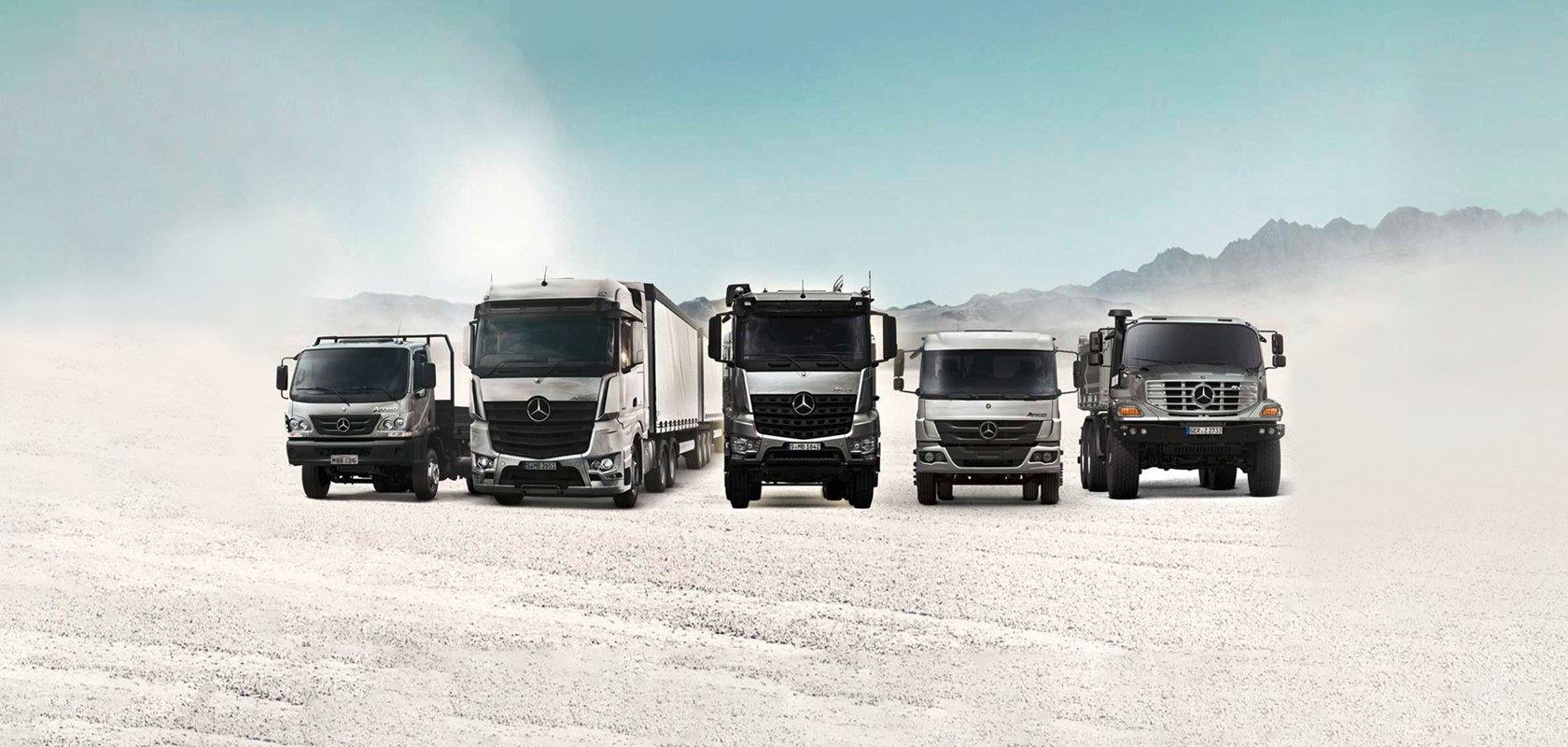Heritage
Mercedes-Benz Trucks have enjoyed a reputation for supreme power, reliability, safety and economy for many years. No wonder that trucks with all these qualities are in great demand specifically in regions where they are faced with extreme conditions.
Trucks you can trust.
As part of the Daimler Trucks division, Mercedes-Benz Trucks has been a hallmark of premium quality for over 100 years. It stands not only for reliability and economic efficiency, but also for first-class products, service quality and comprehensive expertise in the area of customer-oriented transport solutions.
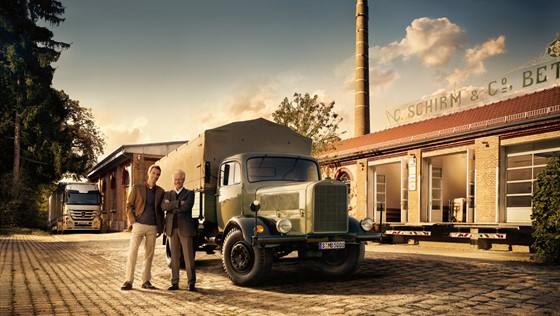
The first truck.
The first Daimler truck was completed in 1896. This ground-breaking vehicle was fitted with a 4-speed belt transmission and a two-cylinder "Phoenix" engine. Although the Phoenix still used the hot tube ignition system, it was already equipped with a spray jet carburettor and developed a creditable 4 hp.
The Daimler truck had a payload of 1500 kg, which would qualify it as a van by today's standards. The first vehicle built was delivered to England.

No. 1 in the region.
With all the outstanding experience and knowledge gained throughout the last decades, Mercedes-Benz trucks has innovated and pioneered in varied fields such as safety, ergonomics, economy and environmental protection. Additionally, in the particular demanding conditions in the Middle East and North Africa, Mercedes-Benz trucks - now operating for decades – has become the leader in the region with a portfolio of trucks designed to endure such conditions with their sturdy, proven components. A service life of over 2 million kilometres is easily achievable.
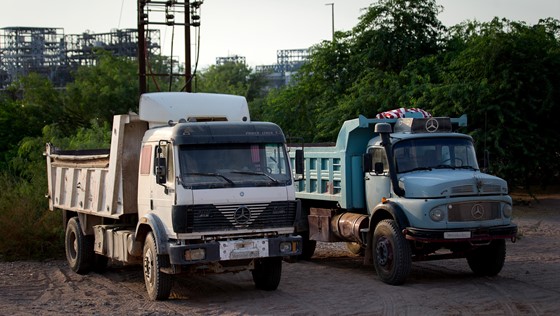
Quality
Each of our vehicles is developed, built and tested with daily use in mind. Only a truck which can fulfil the demands of practical operation can meet our expectations… and yours, too.

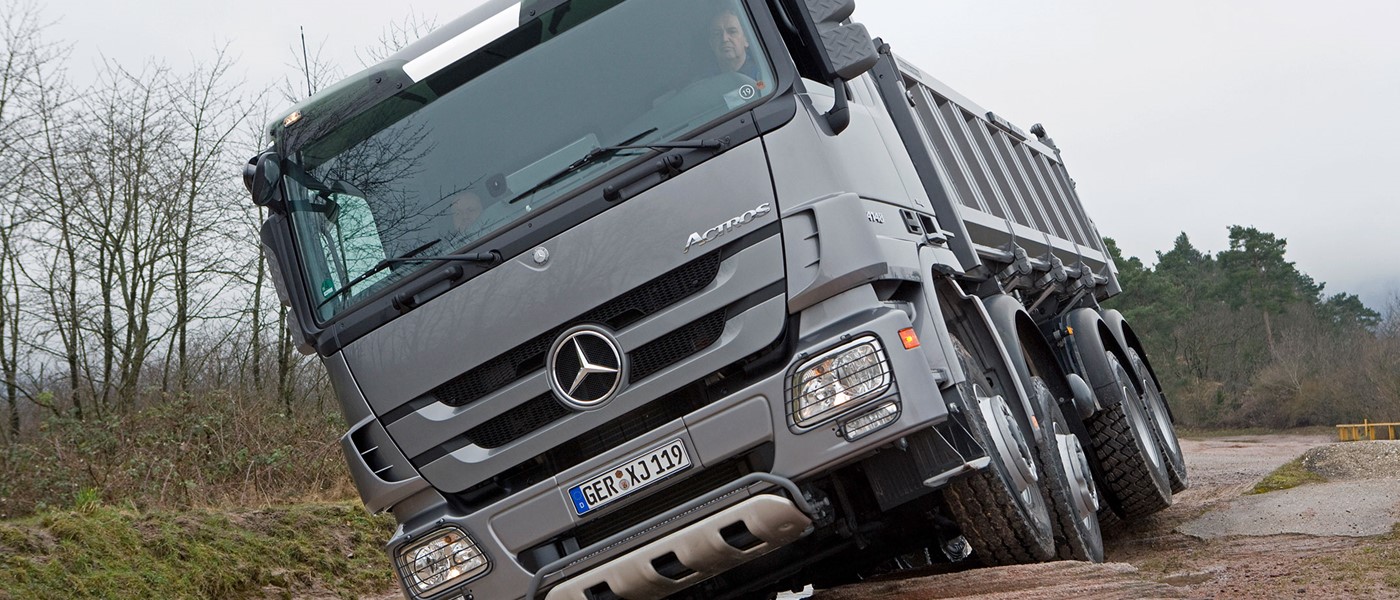

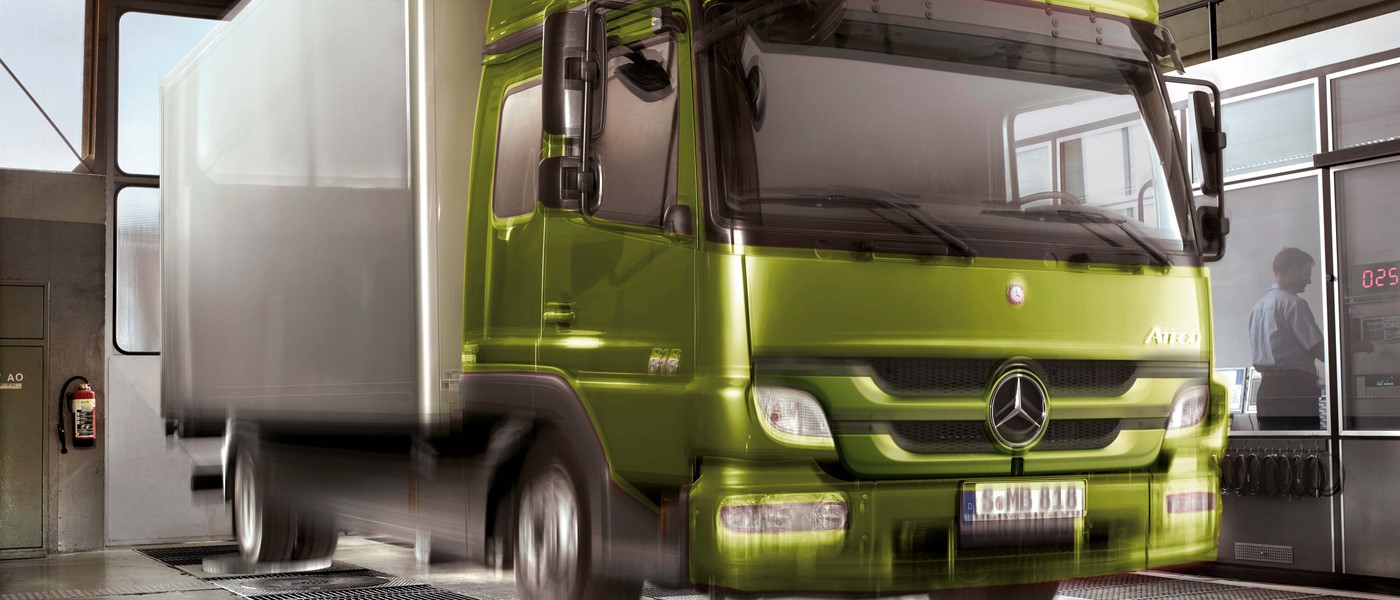

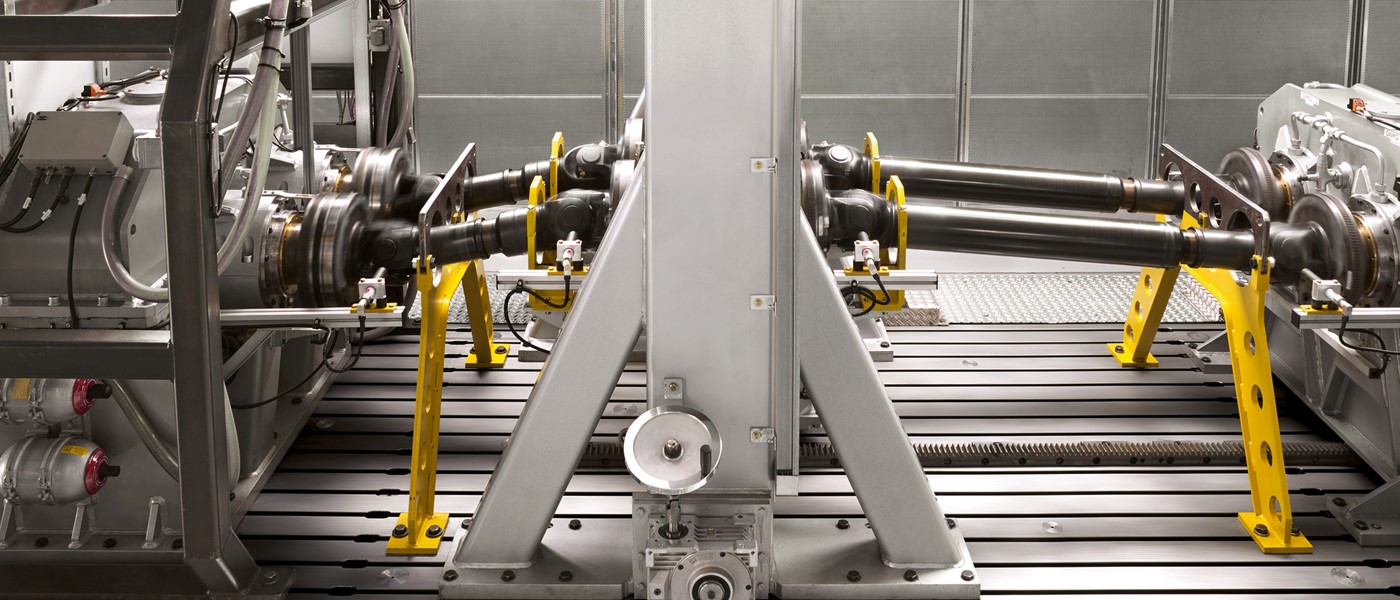
Reliability Testing
Far tougher than normal – long test trials under extreme conditions identify weaknesses and rigorously eliminate them. These conditions perfectly test the reliability and day-to-day suitability of a truck and reveal whether the materials used for flexible mountings, air suspension components or seals are also durable to withstand the most extreme climatic conditions.
Rigorous Testing
More rigorous than usual: customer trials constitute one of the most important tests. After all, nothing exposes weaknesses quite as mercilessly as testing in everyday conditions. Constant technical monitoring of the vehicles and in-depth surveys carried out among drivers and operators give us ample opportunity to take any necessary corrective measures and blend “everyday reality” into the truck’s construction before it goes into production. Any weak points can be eliminated and suggestions incorporated. The end result is a truck for different purposes that is capable of everything we expect of it – and of course, of everything you expect of it, too.
Climate and Adverse Conditions Testing
Accelerated weathering tests: during the dynamic corrosion test, the truck is subjected to extreme climatic conditions in the salt spray chamber and climate chamber for a period of several months. To test the quality of the corrosion protection for the vehicle as a whole, the truck must also successfully complete long test stretches on rough roads, motorways, gravelled and muddy tracks.
Surface Encounter Testing
In the servo-hydraulic test station, uneven road surfaces encountered on motorways, country roads or speed bumps are simulated with outstanding precision. The aim of the tests is to improve the vibration characteristics of axles, frames and detachable parts, thus reducing the dynamics of the components, increasing ride comfort and promoting smooth transport of the cargo.
Endurance Testing
The engines for our vehicles are required to pass test station endurance trials that equate to over 3.6 million kilometres. This standard is set with the purpose of proving reliability and optimization so that each engine is able to operate in the real world.
Endurance Analysis
The propshaft test station further demonstrates the stresses to which the drive system is subjected to before it is allowed to enter service. Test station trials with up to 58 different combinations of engine speeds, torques and bending angles reflect the usage profile and can thus stress the propshafts to the maximum. To ensure that even the slightest damage or cracking is revealed, the shafts and joints are subsequently subjected to component analysis in the laboratory. This analysis is the only way to confirm that they have passed the endurance test in all respects, and that they are able to meet the demanding requirements of long-distance transport.
Innovation
In 1886, we invented the motor car. For over a century, we have pushed the boundaries of automotive engineering, and creating a succession of truly iconic vehicles. Since then we are steadily working on enhancing further innovations in all different fields over our wide portfolio of brands and products. In our Commercial Vehicles Division we are designing the future on the motorways to become even more efficient, safer and connected in the future.
From a vision to reality.
The spectacular Mercedes-Benz Future Truck 2025 study will be providing a visually exciting and technically feasible take on the long-distance truck of tomorrow at the 2014 International Commercial Vehicle show (IAA). In ten years' time, trucks could be driving autonomously on motorways. Transport efficiency will increase, traffic will be safer for all road users, and fuel consumption and CO2 emissions will be further reduced. To do this Mercedes-Benz connects existing assistance systems with enhanced sensors to the "Highway Pilot" system. Autonomous driving is already possible at realistic speeds and in realistic motorway traffic situations. The Mercedes-Benz Future Truck 2025 provides a glimpse of the future shape of trucks.

Exterior: flowing forms with a light show.
In terms of design, the Mercedes-Benz Future Truck 2025 study combines function, efficiency and emotion in a fascinating way. Innovative forms and the lighting engineering of tomorrow send the conventional truck cab into the future. The designers have leveraged the opportunity presented by future length specifications. Compact cameras replace conventional exterior mirrors. Its windscreen resembles a visor. When the fully drivable study is being controlled manually and on the move, the lights are white. When the truck is driving autonomously, the colour of the lights changes from white to blue. They then pulsate strongly, thus symbolising the truck's powerful heartbeat and clearly indicating the vehicle's current operating mode to other road users.
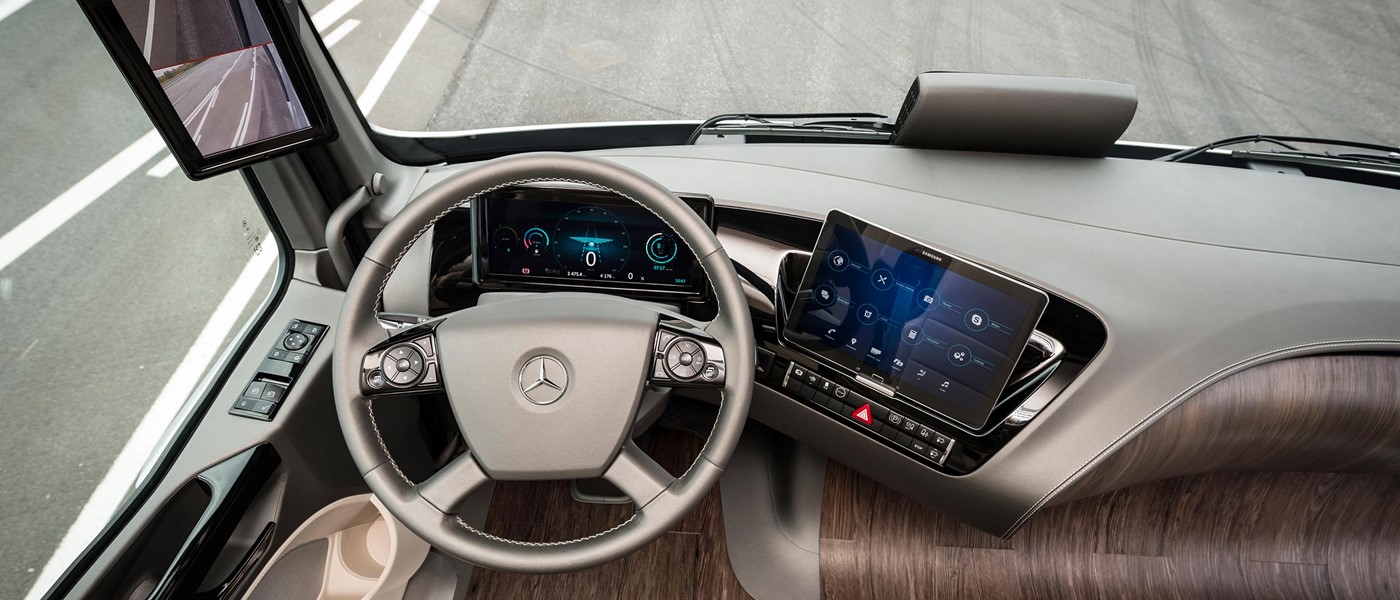



Interior: calming design for a new way of working.
The workplace for driving is calm and uncluttered like a modern, paperless office. Wood flows from the floor to the instrument panel with generous use of the material underlying the inviting atmosphere and sense of well-being on board. The dark finish is strongly grained, open-pore and has a naturally aged effect. The instrument panel is calm and uncluttered, with displays separating instruments and the exterior mirrors. When the truck is travelling autonomously, the driver may recline their seat and also turn it by 45 degrees into the space, allowing them to consciously adopt a relaxed, comfortable working position. At the same time, indirect lighting illuminates the interior without glare. To communicate from the future workplace the driver uses a tablet computer. This is accommodated in the newly designed centre console but is removable. Here the driver can process documents, schedule more destinations, accept further orders and arrange the next break. The computer screen can be configured to suit individual requirements, also enabling the driver to call up all key trip data.
Radar sensors and a camera scan the surroundings.
Radar sensors and camera technology enable the Future Truck to drive autonomously, independently of other vehicles or central control stations. Its technical features are thus crucial in giving the Mercedes-Benz Future Truck 2025 its outstanding capabilities as an autonomous vehicle. For Mercedes-Benz, the culmination of this is the highly intelligent "Highway Pilot" system, which resembles the autopilot on an aircraft. Networking with other trucks or passenger cars extends its abilities further, but is not necessary for autonomous driving.
Blind Spot Assist: more safety when turning and changing lanes.
Blind Spot Assist warns the truck driver about other road users not only when turning; it also warns about imminent collisions with stationary obstacles – for example, signs or lamps – and serves as an assistance system when changing lanes. These sensors form the heart of the new Blind Spot Assist system from Mercedes-Benz. The radar sensor modules are arranged in such a way that they cover the area parallel to the truck over the entire length of a tractor/trailer combination or drawbar combination. In addition, this strip is extended forwards to two metres in front of the truck.
V2V and V2I – communication between vehicles and the outside world.
The "Highway Pilot" is ideally partnered with V2V and V2I networking. Every vehicle equipped with this in the near future will transmit continuous information to its surroundings. This includes vehicle position and model, dimensions, direction of travel and speed, any acceleration and braking maneuvers and the bend radii negotiated. The frequency of information transfer depends on the vehicle speed and the intensity of any changes in its movement. It varies between one message per second when cruising to ten times this interval when changes are significant. In an ideal scenario, an uninterrupted chain of communication forms along a route that rigorously informs the driver and vehicle about road and traffic conditions well in advance. All these data inform the driver and the onboard computer about events happening outside the range of vision in good time. Therefore, the driver and vehicle are aware of obstacles in advance, before they can become a hazard.
Performance
Over the past decades, Mercedes-Benz commercial vehicles have proven their reliability in day-to-day use – even in regions with extreme climatic and topographical conditions. We’ve designed our trucks and vans to master all the typical challenges such as high outside temperatures, heavy dust and uneven terrain. Whether navigating busy cities or crossing the country, your vehicle will offer high performance and efficiency.
Engineered for the Middle East and North Africa – performance you can count on.
The entire powertrain is designed to withstand the tough requirements of the region: everything from the double clutch and extra-large cooling system to the air cleaner and exhaust systems. This ensures that everything runs smoothly, no matter how extreme the climate or how difficult the terrain.
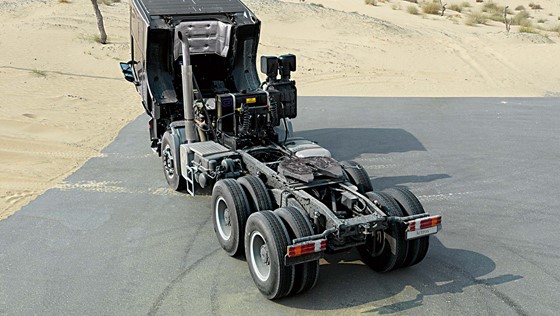
Safety
About seven billion people in the world take to the road every day. And we aim to make future mobility as safe as possible for all of them. As a pioneer in matters of safety, we do all we can to make our “road to accident-free driving” a reality. Daimler engineers remain at the forefront of vehicle safety development. Our main goal is to prevent accidents from happening in the first place.
Past, present and future – always ahead of the crowd.
In the early 1980s Mercedes-Benz launched the world’s first anti-lock braking system (ABS) for commercial vehicles.
Followed by innovations such as the first acceleration skid control system (ASR) in 1987 and the emergency braking system Active Brake Assist 2 in 2010 for commercial vehicles, Mercedes-Benz continues to set benchmarks today.

Less risk, more performance: safety features as standard.
Our integral safety concept is based on real-life traffic scenarios and accidents. In our passenger cars and commercial vehicles, the individual safety components are networked with each other and perfectly coordinated.
Less risk for drivers, passengers and pedestrians – that’s why our vehicles are equipped with exemplary safety features as standard. A number of dynamic control and driver assistance systems are also optionally available. For even more safety.
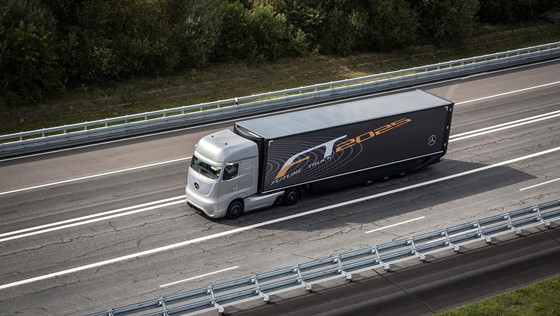
Smart braking and optional extras – for optimum truck safety.
The Telligent® brake system for trucks ensures that braking distances are short – with ABS, ASR, a continuous 10-bar brake pressure and internally ventilated disc brakes that maintain full performance, even under prolonged use.
The range of optionally available equipment for trucks includes bi-xenon lights for enhanced visibility, and the Telligent® Lane Keeping Assist that warns the driver if the vehicle is about to leave its lane unintentionally.

Environment
Every business, especially ones involved in operating commercial vehicles, must face issues pertaining to economic and environmental sustainability. We as Mercedes-Benz take our responsibility towards the environment very seriously. Our commitment to environmental protection is seen in our products, our productions and our innovative and advanced technologies.
Sustainability. A fixed component of our business activities.
For us, product responsibility requires a combination of three things: the greatest possible customer benefit, the highest safety standards, and maximum environmental and climate compatibility.
To achieve this goal, we depend on environmentally compatible product development and innovative concepts. This extends from trailblazing vehicle and powertrain technologies, lightweight construction, the use of natural materials and remanufacturing of components to sophisticated assistance systems that can prevent accidents.

Environmental Awareness
Environmental production is a matter close to our hearts. Accordingly the measures taken for the environmentally compatible production of our commercial vehicles encompass the entire production process: saving primary energy and reducing CO2 emissions by heat recovery plays a major part in this, as does the use of water-soluble paints which significantly contributes to the reduction in solvent emissions. Other examples include the reduction of waste water, the avoidance of waste and uncompromising recycling, which all contribute to a positive LCA – now and in the future.

Production facilities are environmentally running.
The Wörth plant, where all trucks are produced, operates an environmental management system which is regularly inspected by independent environmental auditors and exceeds all of the requirements set out in the EMAS and ISO 140001 environment standards.
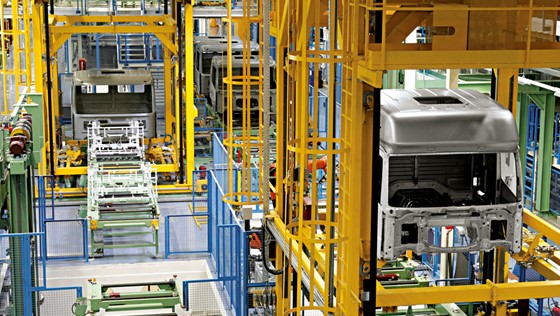
Reusable Materials
In the particular case of the Actros and the Axor, specific attention was paid to the reusability of the materials employed and a recycling-compatible design from the start. As a result, around 85% of all materials in the Actros and the Axor can be reused when the vehicles has reached the end of its operating life.
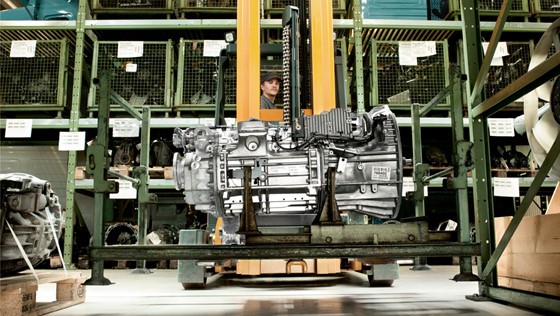
Trucks of lasting value.
We offer trucks that are not only perfectly engineered, but also designed to cope with the conditions they will encounter in the Middle East region. These trucks are built with sturdy, proven components and are configured for extreme topographical and climatic conditions that allow for varying levels of driving skills. This applies also in terms of environmental protection, where we currently provide our customers in the region with proven solutions for meeting Euro 2 and Euro 3 standards.
Mercedes-Benz Trucks is a pioneer and the leader in the area of environmental protection: as a result of ongoing development efforts, diesel engines from Daimler are among the most efficient and low-emission high-tech engines on the market.
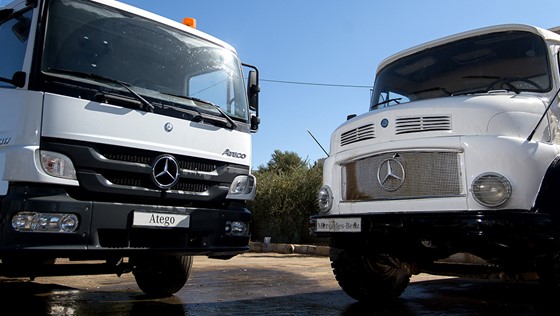
Fleetboard: for improved fuel consumption and an even longer service life.
As one measure towards environment-friendly operations, we are also offering, in all our vehicles, the telematics-supported Internet services provided by Fleetboard which measures the performance of vehicles and drivers on every journey. These services help to identify citeria such as vehicle and driver behaviour in order to decrease fuel consumption and increase the service life of the vehicle.

Good drivers hold the key to success.
A huge impact on fuel consumption and operating life of a vehicle is the driver. Mercedes-Benz offers several driver trainings to train and provide guidance to drivers and fleet owners to further enhance working life.
